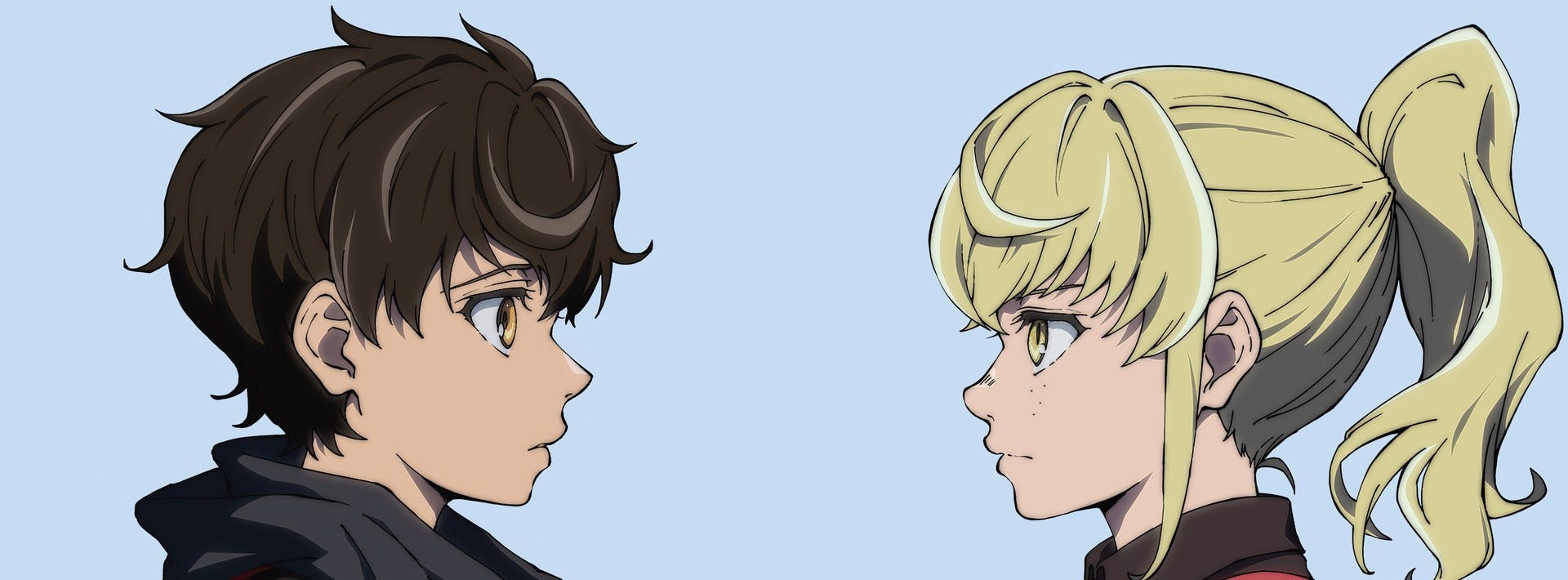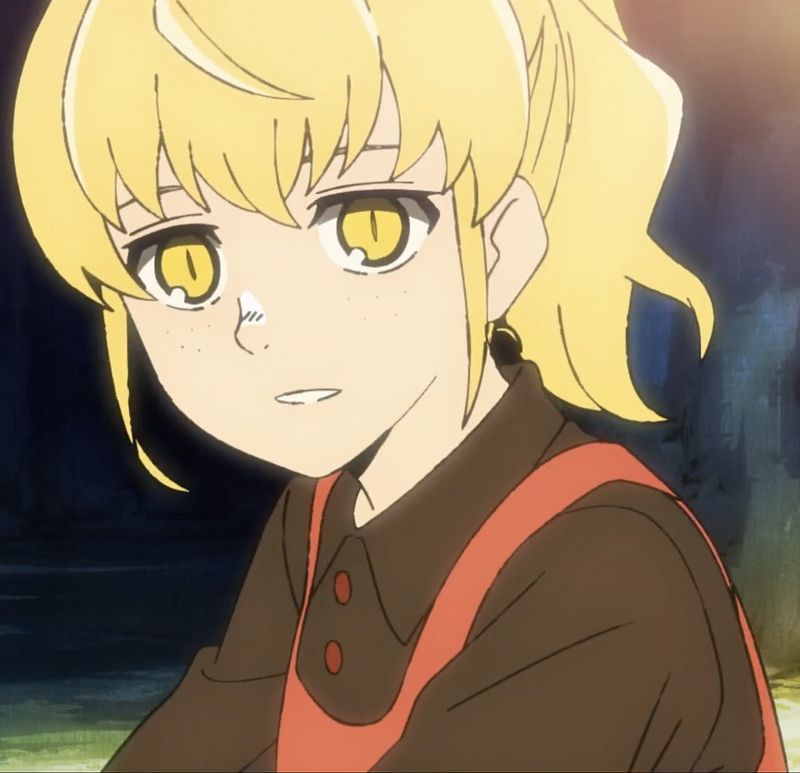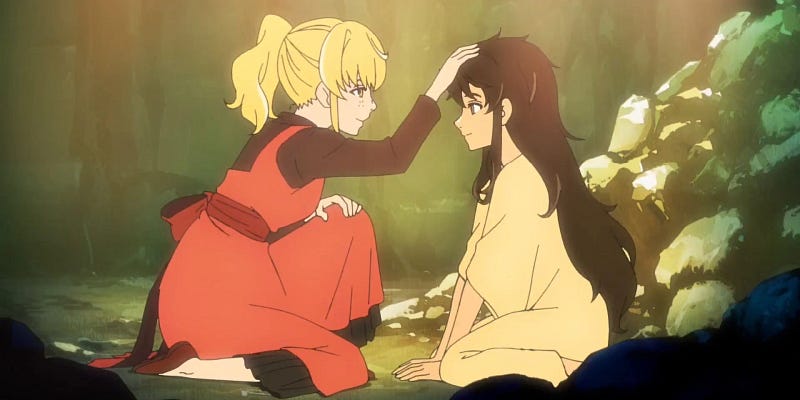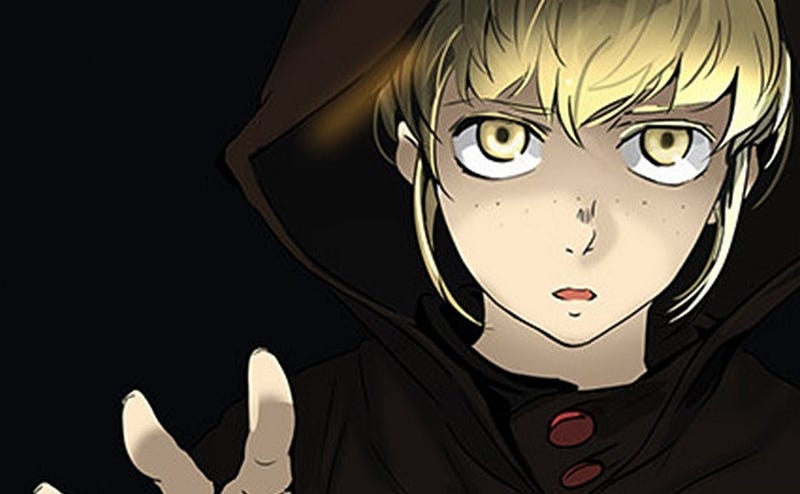How to Write a Hated Main Character

What we can learn from anime, featuring Tower of God
“All Bam did was follow me. Why does he get everything? He’s just Bam.”
CrunchyRoll recently finished airing season 1 of its anime adaptation of Tower of God, which if you aren’t familiar, is a beloved webtoon with over 500 chapters out currently. Recently I joined the flood of people watching Tower of God and fell in love with it right away. In fact, it was so good I decided I couldn’t wait for the anime and went ahead and started reading the webtoon.
I’ll just go ahead and say if you haven’t checked it out, I highly recommend it.
Tower of God has a main character who is loathed by its audience. And I mean a loathed main character. She’s a Daenerys Targaryen, not a Jar Jar Binks. The way that they write her get got me thinking: “This is how you write a hated character.” So I thought I’d share their formula below.
Full disclosure, spoilers ahead. I will only be talking about the first season of the anime here, but the spoilers in here are major for the anime. I’m on chapter 161 of the webtoon, but will try not to draw any bias from that.

Make Her a Focal Point
Tower of God opens on two characters in a quiet dystopia: the protagonist, Bam, and the character in question, Rachel.
We find out that Rachel is not only Bam’s only friend, but the lone person he knows period. Note that Bam is basically a child. We learn that Rachel taught Bam basic concepts, like friendship and how the world operates. Hence, Bam thinks highly of her to say the least.
Rachel tells Bam she can’t live in the dark world they live in anymore, and seeks a better life by climbing the “Tower”. It’s said anything you could want awaits at the top of the tower. Rachel abandons Bam to climb it, telling him to not follow, before she’s swept into ominous giant doors that open from the ground, transporting her to the tower entrance.
Bam, newly alone and heartbroken, does not understand why she has to climb the tower. Realizing he doesn’t want to live a life without Rachel, he vows to climb the tower with her. As if commanded by his sheer will alone, the doors reopen and sweep Bam to the entrance of the tower as well. To his dismay, Rachel is nowhere to be found.
Already, Rachel is a focal point. Though the story centers on Bam, and we’re sucked in to the intrigue of the tower and this dystopian world, Rachel is our impetus. Not only that, we don’t hate her yet. Her feelings are relatable: she’s stuck in a world she hates and wants a better life. Even though we might not agree with how she abandoned Bam to go about escaping the dark world she lives in, we can sympathize with her motives. That is to say, she has clear reasons for doing what she’s doing and they’re established straight away.
From the get go we have a genuine relationship with this character we’re going to hate. A character we hate who has no impact on the story/no relationship with the audience is less interesting than one who does. Not only that, it makes the feelings that much deeper.

Build Desire Through Distance
They say distance makes the heart grow fond. Once the initial relationships are established, make the audience want more from the character by pulling them away. This is a common tactic, especially in anime. In Naruto, for example, Sasuke abandons the village in search of power and answers. Naruto chases after him, unwilling to lose his friend. Regardless of how we feel about Sasuke at that point, we now have a clear story objective predicated on the relationship between Naruto and Sasuke. In the meantime, we build our main character up.
Tower of God does exactly this. Bam is given an opportunity to climb the tower, and he takes it without hesitation. We don’t know where Rachel went, but we know how badly Bam wants to be with her. And that makes us want him to meet her again. He overcomes trial after trial searching for her, and during this interim time we meet side characters, uncover lore around the tower, and get a glimpse into Bam’s character. Our interest in Bam compounds the background desire for him to meet Rachel, which in turn makes us more interested in Rachel.
The distance makes us crave the fateful reunion of these characters. This buildup is critical because now all we want is to see them united. We need to see Bam succeed.
Unfortunately, great storytelling is often about not letting the reader get what they expect.
Give the Audience What They Want
At the end of the season, Bam and Rachel are finally reunited. Rachel is paralyzed from the waist down in one of the tower’s brutal tests, but Bam comes to her rescue. He resolves to be her legs if she wants to keep climbing the tower. One of the test administrators, who allows or rejects people from going up the tower depending on how well they do on the tests, says that Rachel cannot go up the tower in her condition. But then we find out that Bam is a unique resident of the tower called an “irregular”, and because of this the test admin offers them a special, extra difficult test. If they can pass it, they can both go up the tower. Hype.
Everything is going well. We as the audience are on the edge of our seat, thrilled that our characters are back together. It was all was worth waiting for and now we truly believe in the pair. We forgive Rachel for her misgivings about going up the tower alone, as this is good character development.
This is the a critical step on the list because of the next step.

Take Everything They Know and Love Away
Right as they’re about to complete the test and Bam is gushing about how he will be her legs, Rachel betrays Bam. She basically gives him the Mufasa treatment and shoves him into oblivion. Worse, it turns out that she faked being paralyzed in order to gain sympathy from Bam. In fact, it turns out she’s been using him this whole time, jealous that he’s the hero of the story and not her.
And just like that, we go from loving and sympathizing with Rachel, to loathing her for being a self-centered, cold-hearted pile of garbage.
This, in my opinion, is phenomenal writing. Phenomenal not because it’s some epic resolution that I wanted to happen, which is how it goes in most anime, but because I now hate this character. I want nothing more than for Bam to come out of the abyss she pushed him in and tear her down from her self-righteous podium. The emotional connection I had to these characters is now completely different, and more importantly, much deeper.
At the outset of this article you may have wondered: why would I want to make my audience hate a character? This is the reason. It feels like genuine character development, and that’s something that’s hard to come by in the repetitive world of anime/manga/webtoons. It’s the same reason people loved (note the past tense usage) Game of Thrones. We all get attached to one character or plot line and then right after a golden moment they just tear it all down.
It’s infuriating, but it’s real.
Images sourced from: Tower of God (Crunchyroll || Webtoon)